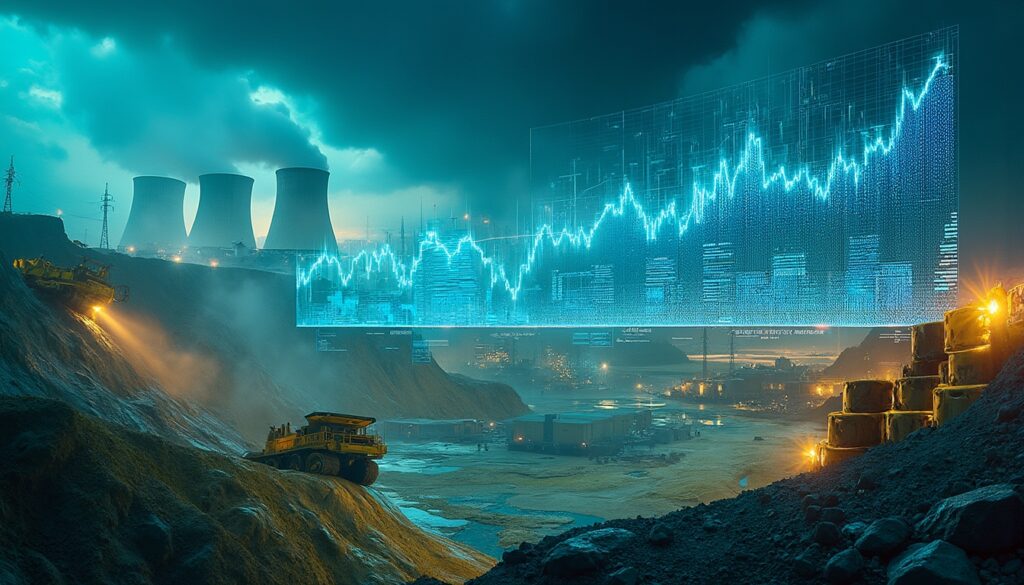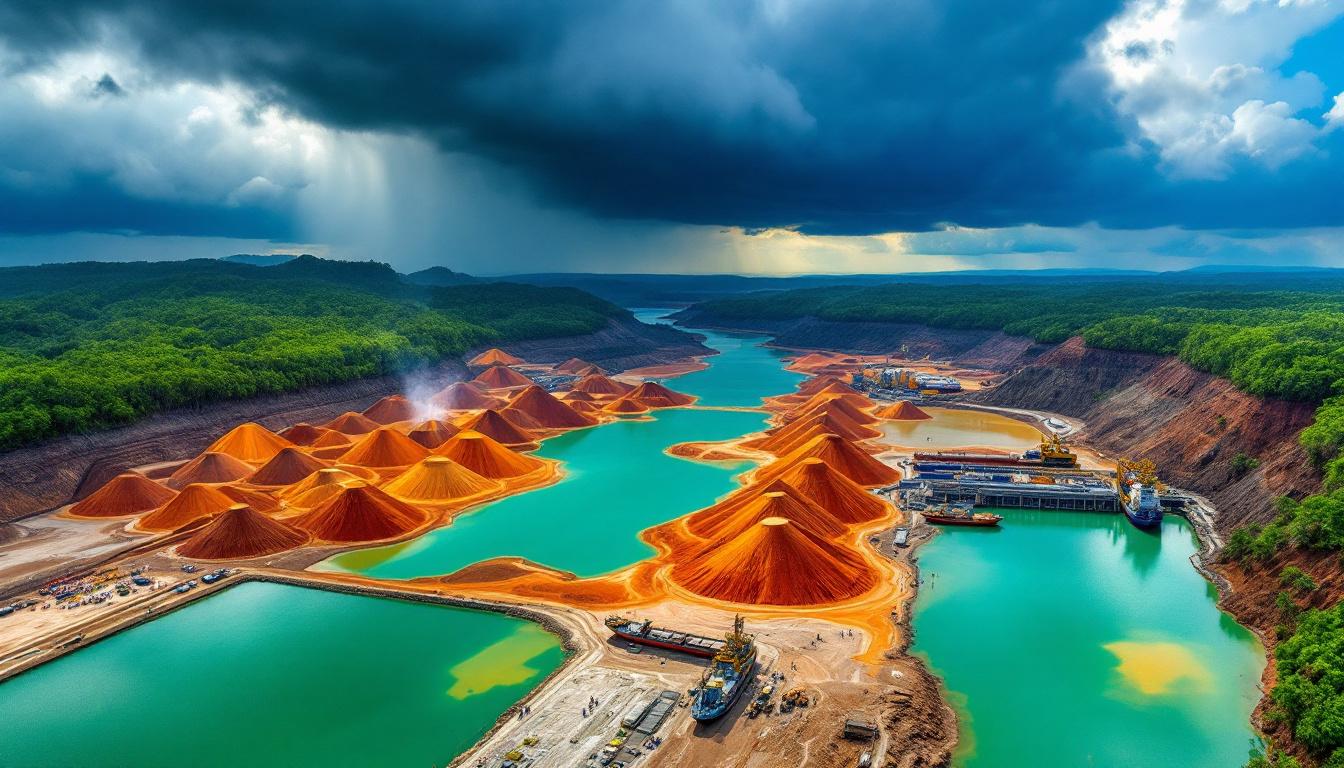The uranium market is evolving rapidly amid shifting sentiment and price discrepancies. In this climate, uranium market trends and investment strategies are more crucial than ever. Spot prices remain near $63-65/lb, while term prices are substantially higher, creating market inefficiencies that savvy investors are watching closely.
A disconnect between spot and term prices has allowed short interest to surge. Three of the top five most shorted ASX uranium stocks indicate that pessimism among certain investors is reaching extreme levels. This environment has led market participants to alternately seek both contrarian opportunities and caution.
Short positions have grown primarily within institutional circles rather than from retail investors. Hedge funds, using sophisticated short strategies, have taken advantage of the thin trading volumes in the uranium sector. These practices underscore the importance of understanding uranium market trends and investment strategies in today's volatile climate.
Utilities and producers are adapting to this uncertainty by refining their approaches. For an in‑depth look at production and deposits, refer to the comprehensive guide to global uranium deposits & production. External assessments from global uranium markets provide additional context.
Why Is There Such Heavy Short Interest in Uranium Stocks?
Short interest in uranium stocks originates from a wave that began in Asia last year. Investors who had profited from targeting lithium stocks shifted focus, igniting the current trend. Their coordinated short selling underscores the belief that uranium remains an "easy short to control."
Various market observers note the vulnerability of the spot market. "The spot market is particularly vulnerable to manipulation," one expert explained. Thin trading volumes and a lack of large financial buyers have left the market susceptible to sentiment-driven moves.
This environment has forced investors to reassess risk and reward. The disparity between spot and term prices continues to create opportunities for those who understand the intricacies of uranium market trends and investment strategies.
How Are Uranium Production Restarts Performing?
The industry has seen nine uranium projects restart operations over the past year. However, these restarts have faced numerous challenges, such as cost overruns, delays, and ramp-up issues. In several cases, production costs have exceeded initial forecasts, thereby affecting profitability.
For instance, Peninsula Energy restarts uranium production in wyoming serve as a case study in project delays. The company has been hampered by persistent setbacks and financial strains, highlighting the complexities of restarting uranium production.
Similarly, other projects have battled technical and financial difficulties. These challenges have thematically raised the incentive pricing floor for new projects and underscore why understanding uranium market trends and investment strategies is vital.
What’s Happening with Uranium Contracting?
Contract negotiations between utilities and producers have become increasingly complex. Utilities leverage lower spot prices to compel downward shifts in long‑term floor prices. There is a palpable tension as major producers try to maintain economically viable term prices.
Producers such as Cameco have shown resilience by insisting on term prices that truly reflect the economic necessities of production. This has led to the creation of hybrid contracts, where fixed prices blend with market-related components. Developers resist pressure to lower their price floors, striving to protect project economics.
Recent contract trends are shaping the broader market. These changes illustrate that, even in uncertainty, uranium market trends and investment strategies must be reviewed periodically to navigate the evolving contract landscape.
How Are Key ASX Uranium Companies Positioned?
Several ASX-listed uranium companies continue to thrive despite market pressures. Boss Energy, for example, sold uranium at around $100/lb while the spot price hovered at $65/lb. This disciplined approach has highlighted the disconnect between spot and term markets.
Other companies, such as Paladin Energy and Deep Yellow, are making strategic moves. Paladin recently acquired Fission Uranium to broaden its project portfolio. Deep Yellow is deliberately delaying its Final Investment Decision (FID) until market conditions improve, illustrating a measured approach to risk.
Bannerman Energy and NextGen Energy are also noteworthy. Bannerman is progressing with site preparations, while NextGen's project at Arrow is praised as a "phenomenal ore body." These strategies affirm the resilience embedded within uranium market trends and investment strategies.
What Investment Strategies Make Sense in This Market?
Investors must adopt flexible strategies amid the volatile uranium market. Some key approaches include:
- Focusing on companies with contracted sales above current spot prices.
- Emphasising U.S. projects in light of increased tariff concerns and domestic supply chain priorities.
- Avoiding legacy contracts that might evolve into liabilities in the event of delays.
- Considering options strategies to manage risk in volatile uranium equities.
For more detailed insights on navigating these opportunities, consider exploring strategic opportunities in uranium investment. Applying uranium market trends and investment strategies can help balance risk with potential for rapid recovery when market sentiment shifts.
Hedge funds and other institutional players continue to exhibit a bearish stance. However, the concentrated short positions may enable rapid price corrections when positive catalysts emerge. In addition, strategies like short covering have the potential to prompt swift and substantial price rebounds when sentiment reverses.
Sophisticated investors also benefit from external analyses like uranium price forecast. Such insights provide a clearer perspective on the timing and scale of market recoveries, reinforcing the strategic importance of uranium market trends and investment strategies.
What Factors Could Trigger a Market Turnaround?
Several catalysts could reverse the current negative sentiment in the uranium market. Key potential triggers include:
- A resolution between Russia and the United States that redirects focus onto uranium supply fundamentals.
- Utilities facing rising pressure to secure uranium supplies as converters demand physical delivery.
- Capital injection from physical funds like the Sprott Physical Uranium Trust.
These factors could drive the market towards a tighter supply-demand balance and a move towards improved pricing. Analysts suggest these factors might overturn persistent bearish trends and highlight the potential of uranium market trends and investment strategies for long-term gains.
Another possibility is that technical challenges in new projects might force companies to revise production targets, which could eventually lead to a market rebalancing when the physical market overhang diminishes.
How Might Geopolitical Factors Impact the Uranium Market?
Geopolitical concerns play a significant role in shaping the uranium market. For instance, discussions of a potential 10% tariff on Canadian energy exports to the U.S. have already begun. Such measures could impact trade flows and disrupt pricing for North American uranium.
The evolving Canadian regulatory framework may also affect the market. With the new Prime Minister aiming to reduce regulatory burdens, Canadian uranium producers could see streamlined permitting processes and shorter development timelines. These changes might offer a temporary boost to North American supply.
The broader impact of geopolitical shifts underscores why tracking uranium market trends and investment strategies is essential. Uncertain global politics directly influence market perceptions and investment behaviour.
What Are the Implications for Uranium Investors?
Despite the current pessimistic sentiment, the investment case for uranium remains strong. Historical cycles indicate that extreme negative sentiment often precedes significant price recoveries. Contrarian investors see opportunities where others see risk.
Investors focusing on projects with robust fundamentals stand to benefit when prices eventually rise. Global nuclear capacity is expanding, with more than 60 reactors under construction and numerous nations extending the lifespan of existing plants. This expansion underscores the long‑term viability of uranium investments.
Key implications include:
- A higher cost floor for new mine developments due to increased production costs.
- Opportunities in acquiring companies with quality projects in stable jurisdictions.
- Potential for short covering to trigger rapid price movements when sentiment shifts.
This complex environment calls for a balanced approach using uranium market trends and investment strategies as guiding principles. Those who navigate the current challenges may position themselves for lucrative opportunities when market conditions improve.
Frequently Asked Questions About Uranium Investing
Is the current uranium bear market changing the long-term investment thesis?
No, the fundamental thesis remains unchanged. Even amid short-term instability, global nuclear capacity is expanding. This underscores the significance of uranium market trends and investment strategies for long-term investors.
What price level is needed to incentivise new uranium production?
Recent experiences indicate that many projects need sustained prices above $75–80/lb to be viable. These revised pricing thresholds suggest that once existing inventory is exhausted, prices must rise significantly.
How are utilities approaching uranium procurement in the current market?
Utilities are using low spot prices as leverage while increasing forward purchasing. This dual approach aims to secure future supplies while protecting project viability under current market conditions.
What role does physical uranium play in investment strategies?
Physical uranium vehicles can directly influence market dynamics. Funds like the Sprott Physical Uranium Trust may prompt significant price movements by purchasing material, thereby reinforcing broader uranium market trends and investment strategies.
How might M&A activity evolve in the uranium sector?
Depressed share prices create acquisition opportunities, yet companies remain cautious without clear shareholder support. The prevailing trend is towards targeted asset acquisitions rather than large transformational mergers.
Each of these factors ties back to the necessity of staying informed on uranium market trends and investment strategies amidst a rapidly shifting global landscape.
Ready to Get Ahead of the Next Major Uranium Market Move?
Discover real-time alerts on significant ASX uranium stock opportunities with Discovery Alert's proprietary Discovery IQ model, turning complex market data into actionable insights that could position you ahead of market shifts. Begin your 30-day free trial today at Discovery Alert and gain a strategic advantage in this volatile sector.




